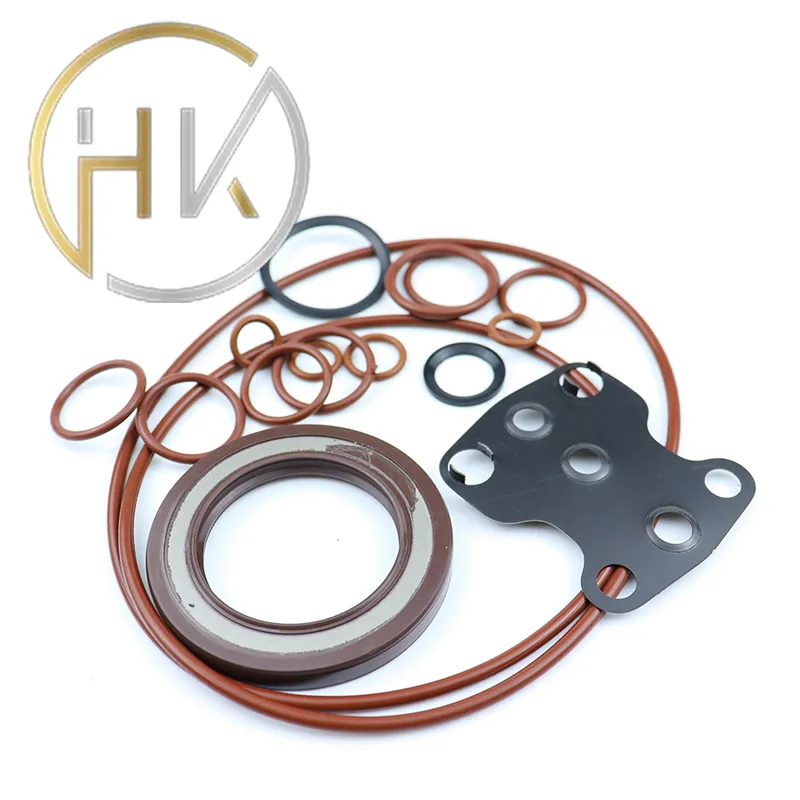Nov . 20, 2024 13:52 Back to list
oil seal for rotating shaft
Understanding Oil Seals for Rotating Shafts
Oil seals, also known as lip seals or rotary shaft seals, play a crucial role in the machinery that involves rotating shafts. These seals are designed to contain lubricants, prevent contamination, and ensure that the machinery operates smoothly and efficiently. This article provides an overview of oil seals, their structure, function, materials, and applications.
Structure of Oil Seals
An oil seal typically consists of three main components the outer casing, the sealing lip, and the spring. The outer casing is made of a durable material that fits snugly into the housing of the machinery. The sealing lip is the critical component that makes contact with the rotating shaft. This lip is usually tapered or flat and is designed to create a tight seal against the shaft surface. The spring, which can be either garter-type or torsion-type, applies pressure to the sealing lip, ensuring it maintains contact with the shaft and preventing any leakage.
Function of Oil Seals
The primary function of an oil seal is to prevent the leakage of lubricants from machinery while simultaneously keeping contaminants such as dust, dirt, and water from entering the lubrication area. This dual role is essential, as the intrusion of contaminants can lead to increased wear and tear on components, ultimately resulting in machinery failure. Moreover, by preserving the lubricant within the system, oil seals help maintain optimal operating temperatures and conditions, which enhances the longevity of machinery.
Oil seals operate under various conditions, which may include extreme temperature fluctuations, pressure variations, and exposure to different types of fluids. Therefore, selecting the appropriate oil seal for a specific application is crucial to ensure its performance and reliability.
Materials Used in Oil Seals
Oil seals are manufactured from a variety of materials, each chosen based on the application's specific requirements. Common materials include
1. Nitrile Rubber (NBR) Known for its excellent oil and chemical resistance, NBR is the most commonly used material for oil seals. It can handle moderate temperatures and is well-suited for automotive applications.
oil seal for rotating shaft

2. Fluoroelastomer (FKM) This material offers superior high-temperature and chemical resistance. FKM is ideal for applications in which the oil seal may be exposed to aggressive fluids and elevated temperatures.
3. Polyurethane Offers excellent abrasion resistance, making it suitable for applications with extreme wear conditions. However, it may not perform well in high-temperature environments.
4. Silicone Rubber While not as oil-resistant as NBR or FKM, silicone rubber is excellent for high-temperature applications and offers good flexibility.
5. Metal In some instances, metal components may be integrated into the design of oil seals, especially in heavy-duty applications. These seals may offer enhanced durability under challenging conditions.
Applications of Oil Seals
Oil seals are widely utilized across various industries, including automotive, aerospace, manufacturing, and oil and gas. In the automotive sector, oil seals are found in engines, transmissions, and differentials, where they prevent lubricant leakage and protect sensitive components. In industrial machinery, they are used in pumps, compressors, and gearboxes to maintain proper lubrication and protect against external contaminants.
In the aerospace industry, oil seals must meet strict regulatory standards due to the critical safety implications. These seals protect hydraulic systems and fuel systems, ensuring the reliability and efficiency of the aircraft.
Conclusion
Oil seals are essential components in any machinery with rotating shafts, providing a reliable means of containing lubricants and preventing the ingress of contaminants. Understanding their structure, function, materials, and applications can help engineers, technicians, and maintenance personnel select the right oil seal for their specific needs, thus ensuring the longevity and efficiency of their machinery. Continuous advancements in seal technology and materials will keep pushing the boundaries of performance, ultimately leading to better and more reliable machinery across all sectors.
-
Wiper Oil Seal: Our Commitment to Clean Hydraulics
NewsAug.13,2025
-
Hydraulic Oil Seal for Self Discharging Cars
NewsAug.13,2025
-
Hub Oil Seal for Agricultural Tractor Hubs
NewsAug.13,2025
-
Skeleton Oil Seal with NBR Material
NewsAug.13,2025
-
Rotary Lip Seal for High Pressure Applications
NewsAug.13,2025
-
Cylinder Seal Kits Our Legacy of Hydraulic Trust
NewsAug.13,2025
-
Unlocking the Potential of Hydraulic Systems with Essential Sealing Solutions
NewsAug.06,2025
Products categories
















